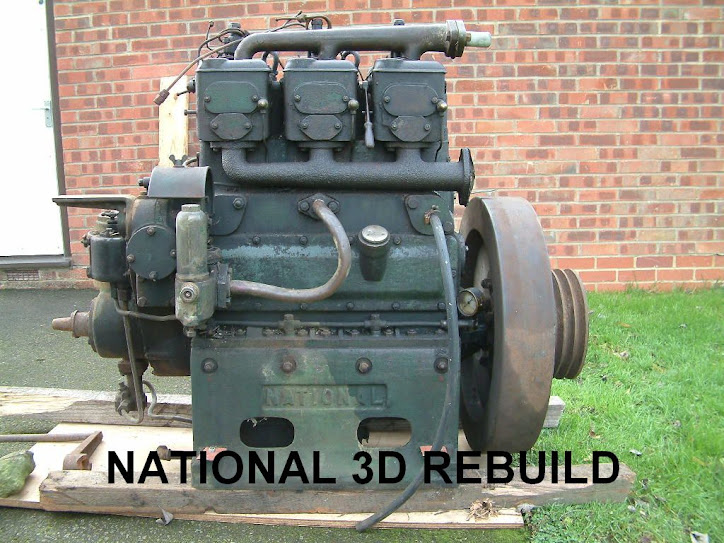Apologies first - this may be very basic at first as its the first time I've ever done this.
I suppose the first posting should be a back ground of why the blog is here and why I'm doing it.
The long and the short of it is because I have a 'National D3' engine that I intend to rebuild and
marinise to put in a 62 foot
narrowboat (yet to be built).
There may be others out there that wish to follow this insanity and mock the afflicted - namely me!
So how did it all start? The
Narrowboat has been in the planning for a long time. All the interior layout is decided (in our minds), builder selected, but the key thing was it had to have a vintage engine - slow
reving - thump, thump, thump. Where to find an engine?
Many months of phone calls, emails, searching the
internet etc, etc and I found something. An
Ailsa Craig
RFR4 - 40hp @ 1200 rpm. Off I went to Wales to look at the engine and see if I could do a deal. Success! not only did I come back with one engine, I came back with two! A pair was available so I had them both.
On returning home I was met with the obvious "why do you need two?" etc. They just don't understand.
So there I am, happy with my
Ailsa Craigs, doing some research and having a little tinker but not getting heavily in to stripping down yet. All was well in my world.
One evening I find myself on
ebay. What do I come across - a listing for a National D3 engine. Its an industrial unit but, hey its gorgeous! It would look just the part in an engine room. Loads of Torque, smooth 3 cylinder running and would sound/look just the part!
How things can change with a click of a mouse button. A bit of last minute bidding and its mine! The date is 23 Nov 2007.
That Sunday saw me heading up to Shropshire armed with me trusty trailer, a 2 tonne engine crane and a boot full of strops and shackles!
Three hours later and I was in the company of the engines previous owner and pouring over a vast array of parts that had been carefully stripped down and, for the most part, cleaned and packed in to various boxes and containers.
A real mans jigsaw! I think the picture on the front of the box has a National D3 on it!
My thanks to Lionel and his wife for their hospitality. A few hours loading the various bits (in fairness - as much time was spent talking
narrowboats and engines) in to the trailer and I was on my way back to
Oxfordshire.
So where am I now - The
Ailsa Craigs are currently residing in a lockup and the National has taken pride of place in the garage. A
decision on the future of the
Ailsa Craigs is yet to be made. They are safe and sound for now.
Several evenings have now been spent going through the boxes of carefully wrapped up bits. I have contacted Russell
Newbery (the National was a RN built under licence from RN to meet the demand in engines from the Grand Union Canal Co back in the 30's). I have joined the RN register. I have contacted Sarah and Jim of the NB Warrior
http://nbwarrior.blogspot.com/ as they have a National 3
DM in their boat.
The next steps: watch this space!







